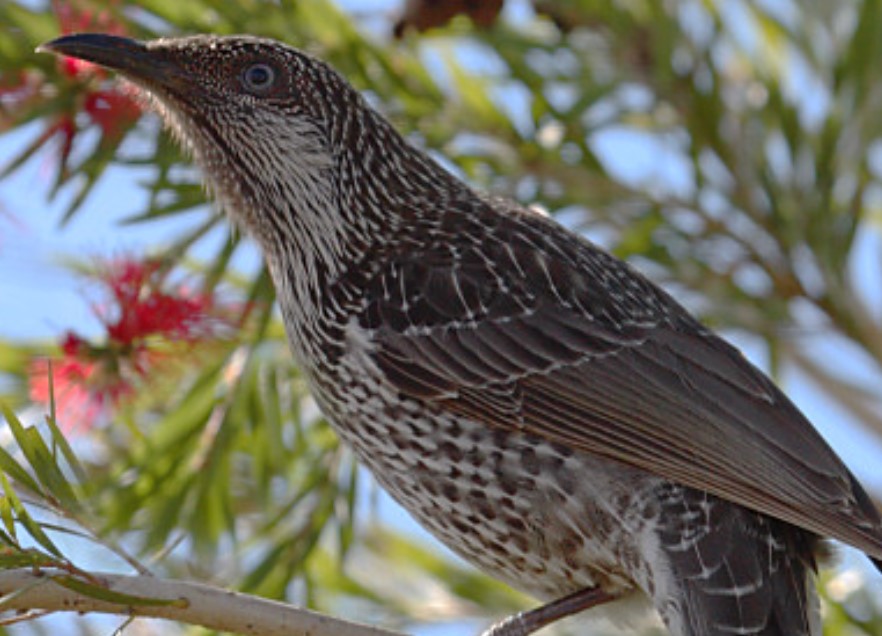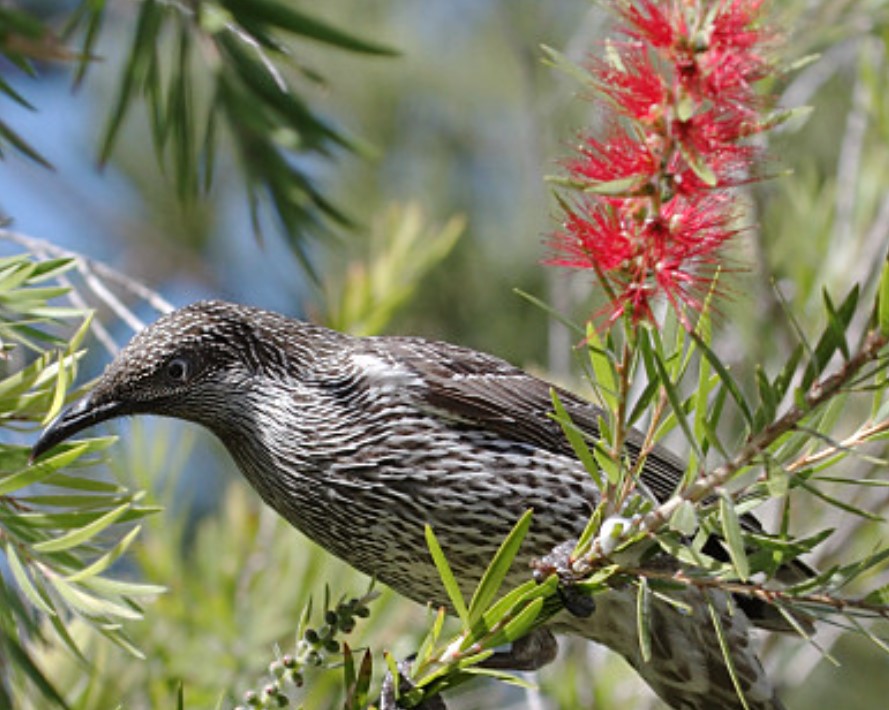Habitat: The beautiful brush wattlebird (Anthochaera chrysoptera) lacks the wattles that characterize other members of the genus. On the southeastern mainland, these birds are largely associated with coastal forests and heaths with tall banksias. They do enter the heathy eucalypt scrub and urban gardens and will wander seasonally to flushes of flowering but in pockets of banksias, particularly B. serrata and B. integrifolia in which there is some flowering year-round. Brush wattlebirds form near-permanent sedentary colonies of 15–30 or more birds. The brush wattlebird belongs to the honeyeater family, Meliphagidae.
Diet: Brush Wattle birds appear to depend largely on a diet of nectar. Their diet includes protein from manna and insects, and their hawks hunt midges and gnats in near-vertical sorties, but these small insects provide little energy, so they seek them more during times of abundant nectar flow. The main sources of nectar are banksias, eucalypts, grevilleas, mistletoes, and epacrids. Around their food sources, the birds establish individual territories, with the males taking over larger patches than the females, from which they chase another watt

Identification: Both sexes are similar; males are distinctly larger. Generally deep gray with white, droplet-shaped shaft streaks, the overall upper and lower parts, including the crown, The sash on the side of the face obscures pale gray, with small white tufts at the sides of the breast. Flight feathers with an area of rufous at the base of primaries, showing in flight; tips broadly white. The tail is broadly white. The eyes are pale blue-gray. Bill is black. The feet are dusky. The immature (as adults) bird is brown or grey with obscure fine streaking; its eyes are dusky.
Vocalizations: Brush Wattlebird’s call is a soft cheeping weep when feeding, also by fledglings; loud rasping thanks or squawks by males; and high-pitched squeaks by females as territorial markers, often repeated. The song consists of soft metallic high double-note shrieks by the female, they-he, the second note lower, often quickly repeated. The bill snaps and spaced guttural rasping squawks and chokes by males are often repeated in descending sequence. Frequently given in duets, the female leads Moreover, kwock or shnairt sounds are considered alarm calls.
Nesting and breeding: Nesting and breeding opportunistically in all months, mainly July-December. Nest in a rough cup of woven twigs, grass, and plant fiber, lined with wool, fiber, and feathers, supported by the outer branchlets of a tree or shrub, 2–15 meters above the ground.
Eggs: Brush Wattlebird lays usually two eggs, but sometimes three; pink-buff, irregularly spotted red-brown, and purplish red, mainly at the large end; oval, about 28 x 21 mm. The incubation period is about 15–16 days for females. Young fledge in about 16–17 days. Both parents look after the young.
Distribution: Brush Wattlebird is found in shrubby forests and tall heath on the coast and nearby ranges, with Banksia from near Rockhampton, Queensland, southwest to Adelaide and Kangaroo Island, South Australia, and Tasmania.
Similar Species: The brush wattlebird’s appearance is somehow similar to the red wattlebird and the yellow wattlebird.
Alternative Names: It is also called Little Wattlebird, Biddyquock, Cookaycock, Mocker, Mock Gillbird, and Mock Wattlebird.
Size: The Brush Wattlebird is about 275–320 mm long, with a tapered tail.
Races: There are three races.
-
-
c. chrysoptera: This is found in eastern and southeastern Australia (Latham, 1801).
-
c. halmaturina: This is found on Kangaroo Island (South Australia) (Mathews, 1912).
-
c. tasmanica: This is found in Tasmania (Mathews, 1912).
-
Taxonomy: In 1801, ornithologist John Latham first described brush wattlebirds under the binomial name Merops chrysoptera.
Related Reading: White-fronted Honeyeater (Phylidonyris albifrons)







